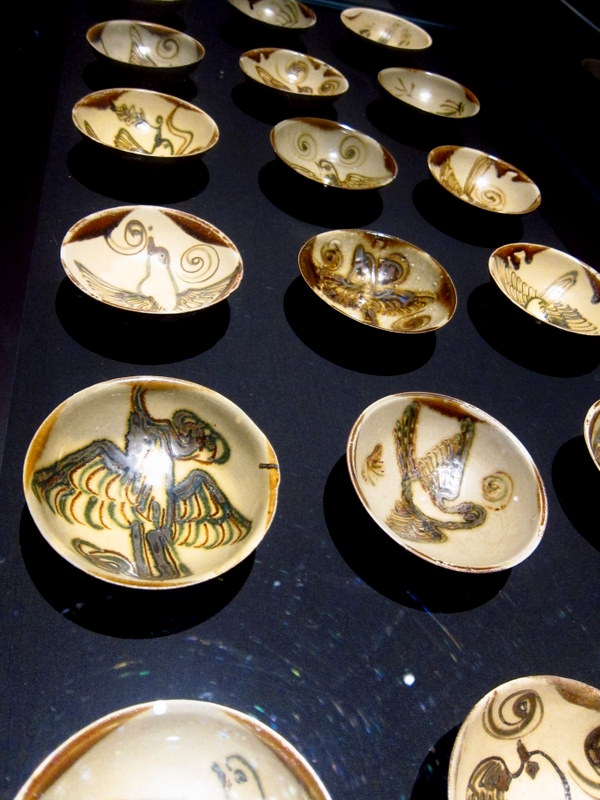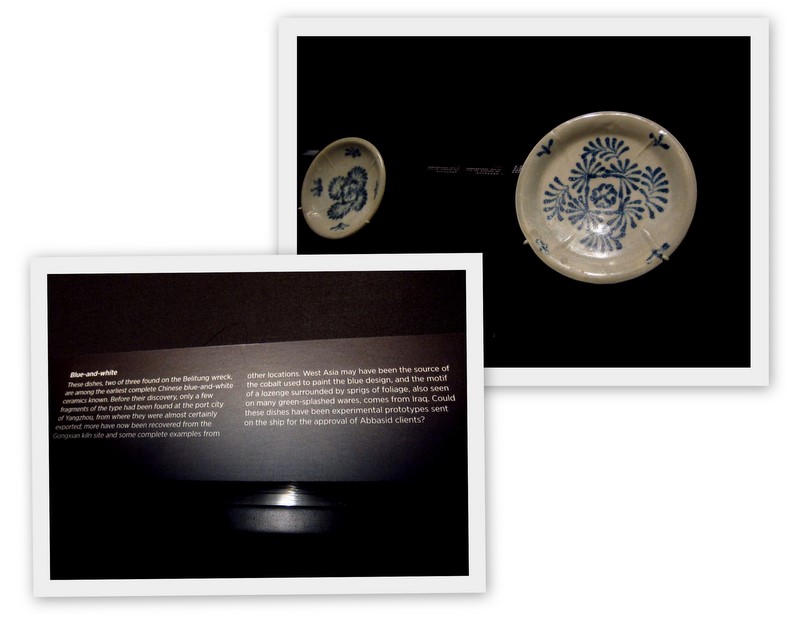Noey and I went to the ArtScience Museum last Monday. It was a school holiday as it was Youth Day, so I decided to take the opportunity to bring him out for some Mummy-Noey time.
I had brought him on many museum visits during Children’s Season, but this one was more for me. It was for a personal reason that I really wanted to catch the Shipwrecked Tang Treasures exhibition before it ended its run on 31 July. Way back when I was in legal practice, I had been briefly involved in a matter relating to the sale and purchase of this very cargo of treasures. As a junior lawyer in construction law practice, you can imagine how exciting the topic of sunken treasure was! Now that the precious cargo is finally on display, I couldn’t resist going to take a look.
The collection showcased in this exhibition is one of the most important archaeological finds of the 20th century. It was discovered when, back in 1998, a fisherman diving for sea cucumbers off the coast of Belitung, an island in the Java sea, came across an unexpected mound rising above the flat sea floor. It was composed of ceramic bowls and jars, some whole, some fragmentary, buried in the muddy sand, or encrusted in coral. When salvagers begin investigating the site, they discovered that these objects were just part of an ancient cargo that consisted of tens of thousands of ceramics, and other even more precious artefacts.
The importance of the find lies in the fact that the ship carrying this precious cargo was a 9th century Arab Dhow — the oldest ocean-going vessel ever found in South East Asia. The existence of this ship confirms the existence of a direct maritime trade route from the Gulf to the South China Sea. There were an astonishing 60,000 objects discovered, considered to be the largest quantity of Chinese trade goods and luxuries from Tang Dynasty China ever discovered. It was also surprising for the huge numbers of mass-produced ceramics it contained, and for the exceptional items forming part of the cargo, such as the earliest complete examples of Chinese blue-and-white dishes and intricate items of finely worked gold.
For 1,100 year old bowls, these really look just like bowls you and I would eat from today!
It was an interesting exhibition, and I say this not just because of my personal interest. The range of items and the significance of the find make it a worthwhile exhibition to view. I think it is a pity that its run at the Smithsonian has been indefinitely postponed due to protests over the salvage and commercialisation of the find.
What did Noey think about the exhibition?
I think it made more of an impression than I initially thought. I half regretted bringing him along as he kept running from display to display, leaving me little time to read the write-ups and look over the exhibits. “Shall we look at something else?” he kept asking. But when we came back, he was able to tell his Papa about the “many bowls” that he saw, as well as the “huge jars covered with coral”. I think he was a bit disappointed that he wasn’t able to see the actual shipwreck with fish swimming around it. Hah.
The exhibition did have a number of child friendly activities, which he enjoyed messing around with.
There was also a table where you could make a model of the gold cup out of paper. It was a bit difficult for Noey so he just sat there and pestered me to do it!
After we were done with this gallery, we also spent some time at the Van Gogh and Dali exhibitions. These are also included in the (highly expensive) admission to the museum. It’s $30 for adults and $17 for children from 2-12 years of age. Thankfully, I managed to get a 20% discount with my OCBC credit card, and the ticketing staff were nice enough not to charge me for Noey. With that kind of price, I figured we’d see everything to make our money’s worth! More of that in a separate post.










Leave a Reply